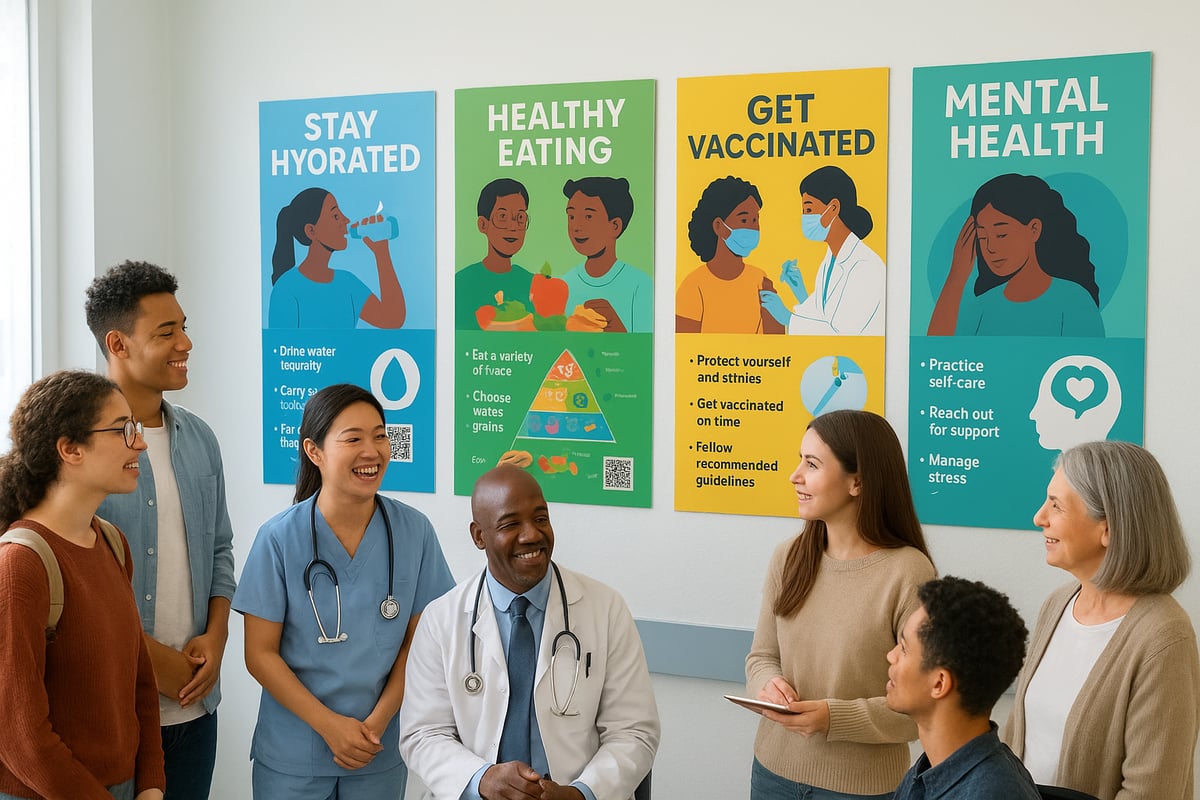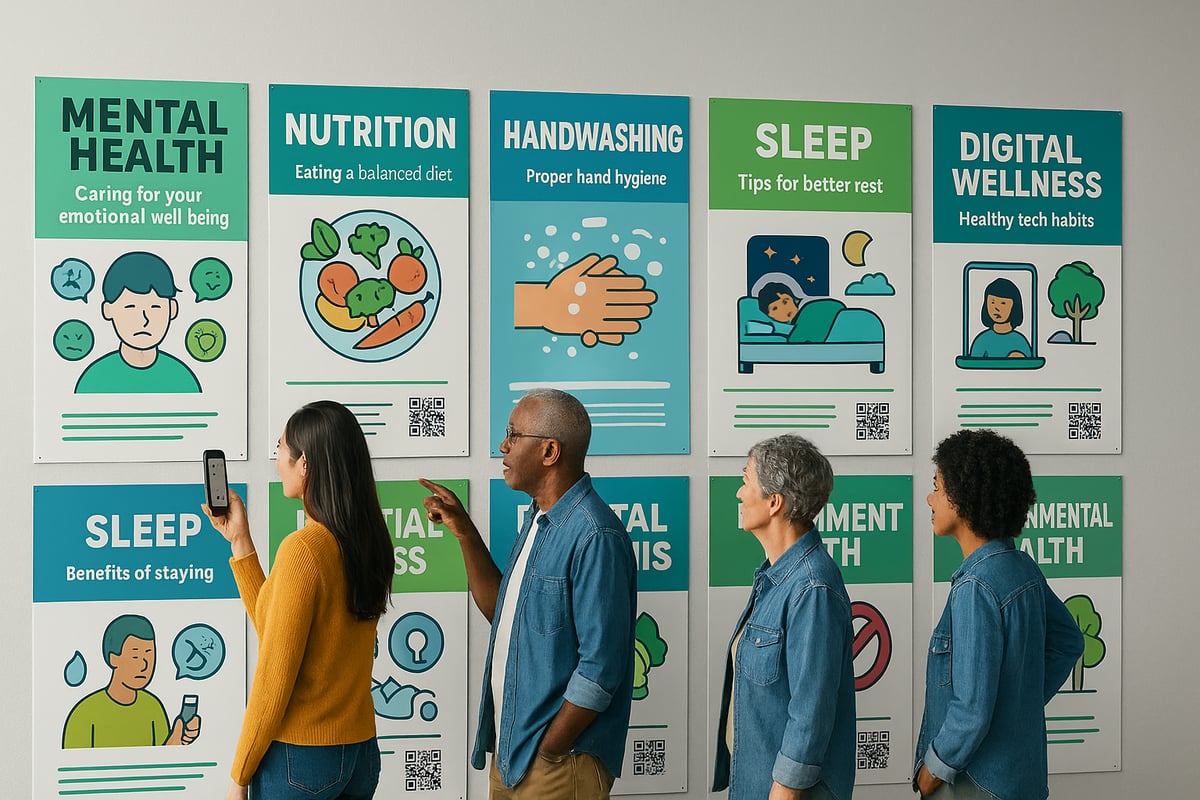Visual learning transforms the way we absorb health information. In a world filled with data and distractions, a well-designed health education poster can capture attention and make vital messages memorable.
This article spotlights seven inspiring health education poster ideas for 2025, tailored to the evolving needs of schools, clinics, and communities. Creative, evidence-based visuals are now essential tools for impactful health communication.
You will discover a diverse range of poster concepts, expert design tips, and smart strategies to engage every audience. Ready to reimagine your approach? Explore new ways to inform, inspire, and drive healthy change.
The Evolving Role of Health Education Posters in 2025
The landscape of health education poster design is changing rapidly in 2025, blending tradition with innovation. As health communication adapts to new technologies, posters remain a vital bridge, connecting evidence-based messages to diverse audiences. Understanding these shifts is essential for anyone aiming to create impactful health education poster campaigns.

Shifting Trends in Health Communication
Health education poster strategies are evolving, reflecting the move toward digital and interactive platforms alongside classic print. Visual clarity and accessibility are now non-negotiable, as studies show visual aids can boost retention by up to 65 percent.
In multicultural and multilingual environments, a health education poster acts as a universal language, reaching individuals across different backgrounds. There is also a growing emphasis on inclusivity, ensuring poster imagery represents varied cultures, abilities, and identities.
Why Posters Remain Essential in Health Education
Despite digital advances, the health education poster continues to reinforce key health messages in schools, clinics, and workplaces. Posters serve as constant reminders, prompting behavior change and raising awareness on topics like nutrition, hygiene, and mental health.
They are cost-effective, easily distributed, and adaptable for all ages and literacy levels. For example, posters in cafeterias can nudge healthier food choices, while in clinics, they support hand hygiene and preventive care. The health education poster’s broad reach and versatility make it a staple in public health efforts.
What Makes a Poster Inspiring in 2025?
An inspiring health education poster features bold visuals, concise messaging, and practical steps for action. Up-to-date, evidence-based content builds trust and relevance. Interactive features, such as QR codes and augmented reality, allow learners to engage deeper with the material.
Successful posters have sparked real change, like increased handwashing or open conversations about mental health. Educators and health professionals consistently report higher engagement when posters are visually appealing and culturally resonant.
Key Design Principles for Impactful Posters
Effective health education poster design relies on color psychology and readable font choices to ensure clarity. Culturally sensitive images and inclusive language foster belonging and trust.
Best practices include clear hierarchy, ample white space, and strategic call-to-action placement. Infographics and icons simplify complex ideas for quick understanding. Accessibility is crucial, with features like large print, Braille, and translations. For a deeper dive into data-driven audience analysis and visual strategy, see Designing Effective Health Campaign Posters and Flyers.
7 Inspiring Health Education Poster Ideas for 2025
In 2025, the health education poster remains a vital part of public health communication, offering innovative ways to engage diverse audiences. Let us explore seven dynamic poster ideas designed to inspire, inform, and drive healthier choices in any setting.

1. Mental Health Matters: Promoting Emotional Wellbeing
Mental health has emerged as a top priority in health education poster design for 2025. These posters aim to destigmatize mental health challenges and spark open, supportive conversations.
Modern posters use soothing color palettes such as soft blues and greens to evoke calm. Characters reflect a range of ages, backgrounds, and experiences, making the message relatable. Actionable tips, like deep breathing exercises and ways to build daily routines, are featured prominently.
A practical way to deepen impact is by adding helpline numbers and QR codes. These direct viewers to trusted resources, such as the Relieving Stress and Anxiety Tips, which provides techniques for managing stress and anxiety.
Schools and community centers have found particular success with these posters during Mental Health Awareness Month. For example, a high school campaign reported increased student engagement and more peer-to-peer support after displaying a health education poster series focused on stress management.
The Centers for Disease Control and Prevention (CDC) reports that one in five adults experiences mental illness each year. By placing health education poster content in visible locations, organizations can offer reminders that seeking support is normal and encouraged.
Pros: Highly relevant after the pandemic, promotes open dialogue.
Cons: Sensitive topic, requires careful and inclusive language.
2. Nutrition for All Ages: Building Healthy Eating Habits
A health education poster on nutrition can make healthy eating approachable for everyone. In 2025, posters highlight balanced diets using updated visuals such as MyPlate or global dietary guides. These visuals help simplify complex nutrition advice for all ages.
Diverse foods are depicted, reflecting different cultures and dietary needs. Quick nutrition swaps, portion control graphics, and colorful infographics keep the message clear and actionable. For example, a “What’s on your plate?” QR code can lead to interactive meal planners or recipes.
Such posters are ideal for schools, clinics, and cafeterias. Data from the USDA shows that cafeteria posters can increase fruit and vegetable selection by 12 percent. This demonstrates the tangible impact a well-crafted health education poster can have.
Health education poster campaigns also adapt for different literacy levels, using simple language and visual cues. The posters may include tips such as choosing whole grains, drinking water, and limiting added sugars.
Pros: Universal message, appeals to all ages and backgrounds.
Cons: Risk of oversimplifying nutrition science, requires regular updates as guidelines evolve.
3. Hand Hygiene Heroes: Preventing the Spread of Illness
The health education poster focused on hand hygiene remains a staple in infection prevention. In 2025, these posters feature step-by-step guides using fun mascots or icons to capture attention, especially among children.
Bold, contrasting colors improve visibility in busy environments like schools and clinics. Clear visuals demonstrate each step of handwashing, from wetting hands to drying with a clean towel. Including a “Did You Wash?” checklist makes it easy for classrooms or medical offices to monitor compliance.
Statistics highlight the value: effective hand hygiene can reduce respiratory illnesses by 21 percent. A health education poster with this information reinforces the importance of the habit.
Schools have noted a decrease in absenteeism after implementing hand hygiene posters. Hospitals and public spaces also benefit from regular updates to keep messaging fresh and relevant.
Pros: Immediate impact on behavior, easy to adapt for different ages.
Cons: Requires routine updates to maintain engagement and accuracy.
4. The Power of Sleep: Rest for Better Health
Addressing sleep health with a health education poster is increasingly important. Many people underestimate the effects of sleep deprivation on mood, immunity, and learning. Posters in 2025 use visuals showing bedtime routines, tips for reducing screen time, and the importance of consistent sleep schedules.
Infographics illustrate how sufficient sleep supports brain function and emotional wellbeing. Quick tips, such as limiting caffeine in the evening and creating a calming bedtime routine, are easy to remember and act upon.
The CDC states that 35 percent of adults get less than seven hours of sleep per night. By placing a health education poster about sleep in pediatric clinics, schools, or workplaces, organizations can encourage better habits among teens, parents, and shift workers.
A practical example is a pediatric clinic that saw increased discussions about sleep between parents and providers after displaying sleep health posters.
Pros: Underserved topic, addresses a growing public health need.
Cons: Impact can be hard to measure quickly, may require ongoing encouragement.
5. Move More, Sit Less: Inspiring Active Lifestyles
Physical activity is a cornerstone of good health, and a health education poster on this theme uses dynamic visuals to motivate all ages. Posters show a range of activities, from walking and dancing to stretching and team sports, making movement accessible to everyone.
Clear daily movement goals, such as 150 minutes of moderate activity per week (as recommended by the WHO), are presented alongside creative ideas for fitting exercise into busy schedules. QR codes can link viewers to exercise videos or local fitness guides, extending learning beyond the poster.
Schools and community centers have reported an 18 percent increase in gym class participation after introducing these posters. They are also effective in workplaces, encouraging employees to take movement breaks during the day.
The health education poster can be tailored to reflect cultural preferences and ability levels, ensuring everyone feels included.
Pros: Broad appeal, supports a range of health goals.
Cons: May need cultural adaptation to resonate with all communities.
6. Digital Wellness: Navigating Screen Time and Online Safety
With digital device use at an all-time high, a health education poster on digital wellness tackles essential topics like screen time, posture, and online safety. Posters feature relatable scenarios for both children and adults, making the information easy to absorb.
Visuals show healthy screen habits, such as taking regular breaks, maintaining good posture, and setting boundaries for device use. Tips for preventing cyberbullying, maintaining privacy, and balancing online and offline life are clear and concise.
According to Pew Research, 95 percent of teens have access to a smartphone, highlighting the need for digital wellness education. Posters are especially useful during events like Digital Citizenship Week in schools, prompting important conversations about technology use.
These health education poster campaigns are updated frequently to keep pace with changes in digital trends and online risks.
Pros: Highly relevant in modern society, appeals to families and youth.
Cons: Content evolves rapidly, requiring frequent revisions.
7. Environmental Health: Clean Spaces, Healthy Lives
The connection between personal health and the environment is a growing focus for health education poster design. Posters showcase themes such as recycling, clean air, safe water, and access to green spaces.
Action steps like reducing waste, choosing eco-friendly products, and planting trees are presented in visually engaging ways. Infographics or checklists can illustrate how small choices contribute to community health.
These posters are popular in schools, offices, and community organizations, especially during campaigns like Earth Day. The EPA notes that improved air quality can reduce respiratory issues by 20 percent, a statistic that adds weight to the poster’s message.
A health education poster on environmental health encourages community involvement and instills a sense of shared responsibility.
Pros: Promotes community action, highlights broader health connections.
Cons: Scope can be broad, so focus is important for clarity.
How to Implement and Customize Health Education Posters for Maximum Impact
Tailoring a health education poster for its audience is the key to making messages resonate. Adapt language, imagery, and layout to suit age, cultural background, and literacy levels. For instance, posters in pediatric clinics might use playful characters and simple words, while those for senior centers benefit from larger print and clear visuals. Multilingual versions and accessible features like Braille ensure everyone can benefit. Pilot testing designs with real users helps refine messaging and boosts effectiveness. For more guidance on creating impactful posters that engage diverse groups, explore the Designing Effective Posters to Promote a Health Campaign - Project SHARE Curriculum.

Leveraging Technology: QR Codes and Augmented Reality
Modern health education poster design harnesses technology for deeper engagement. Embedding QR codes lets viewers instantly access videos, quizzes, and downloadable resources. Augmented reality features can bring static images to life, demonstrating health concepts through interactive animations. Interactive elements are especially useful with younger audiences who expect digital connections. Recent campaigns show that posters with tech integrations increase user participation and information retention. While implementing these features, ensure they are easy to use and accessible on multiple devices to maximize reach.
Printing, Placement, and Maintenance Best Practices
The effectiveness of a health education poster depends on more than just content. Choose durable materials and optimal sizes for different locations, such as large displays in lobbies or smaller versions for exam rooms. Strategic placement in high-traffic areas boosts visibility. Rotate posters regularly to keep content fresh and relevant, and opt for eco-friendly inks and recyclable materials when possible. For comprehensive tips on layout, typography, and visual elements, consult the Poster Design - Public Health - Library Research Guides at Hood College. Following best practices ensures your posters remain eye-catching and long-lasting.
Measuring Effectiveness: Tracking Engagement and Outcomes
To assess the impact of a health education poster, use multiple tracking methods. Surveys can gather feedback from viewers, while QR code analytics reveal how many people access linked content. Monitor behavior changes, such as increased handwashing or improved nutrition choices, and collect feedback from staff or students about poster clarity and usefulness. Incorporate poster outcomes into broader health education programs for a holistic view of progress. Regular evaluation not only justifies poster investments but also guides future improvements, ensuring messages achieve their intended goals.
Tips for Designing Your Own Health Education Posters
Creating an impactful health education poster starts with a clear understanding of your goals and audience. Every design choice, from visuals to language, should support your message and encourage engagement. Here are practical tips to help you build posters that inform, inspire, and drive real health improvements.

Choosing the Right Message and Imagery
Start every health education poster project by selecting a topic that matters to your audience. Use recent health trends, seasonal issues, or local community needs to guide your choice.
Pair concise, positive messaging with relatable visuals. Real-life stories or testimonials can make information memorable. For example, a poster featuring a student’s success story about allergy management can resonate deeply. Choose images that reflect the cultural diversity of your viewers for greater connection.
Positive framing and actionable advice are key. Consider referencing resources like the Allergy Action Poster for Schools for inspiration on practical messaging that drives action. Each health education poster should empower viewers with clear steps to improve their well-being.
Collaborating with Stakeholders: Educators, Healthcare Providers, and Designers
The best health education poster designs are rarely created in isolation. Involve educators, nurses, doctors, and even students or patients early in the design process. Their insights ensure accuracy and cultural relevance.
Host co-creation workshops or feedback sessions to gather diverse perspectives. Teachers can advise on age-appropriate language, while community leaders may highlight local concerns. This collaboration leads to posters that are both effective and widely accepted.
Invite your target audience to review drafts and share feedback. This step helps refine your health education poster and increases the likelihood of real-world impact. Remember, a collaborative approach fosters trust and supports lasting behavior change.
Accessibility and Inclusivity in Poster Design
Ensure every health education poster is accessible to all. Use large, easy-to-read fonts and high-contrast color combinations for clear visibility. For digital versions, include alt text and make sure layouts are screen-reader friendly.
Offer multilingual options and consider Braille or tactile elements for in-person displays. Avoid imagery or language that could reinforce stereotypes or exclude any group. Public health departments often provide examples of inclusive posters that set a strong standard.
Accessible design is not just a legal requirement, but also an ethical responsibility. By prioritizing accessibility, your health education poster can effectively reach and support everyone in your community.
Staying Current: Updating Posters for 2025 and Beyond
A health education poster should never be static. Review content regularly to ensure information is accurate and aligns with the latest health guidelines. Incorporate new research findings, updated recommendations, or emerging health concerns as needed.
Digital posters offer flexibility for quick updates. Monitor feedback from your audience and track engagement to identify areas for improvement. Trends in health communication evolve rapidly, so staying informed is crucial.
For structured guidance on best practices, consider resources like Designing a Public Health Poster - Western Region Public Health Training Center. Future-proof your health education poster by making regular updates part of your workflow and embracing new design tools.






